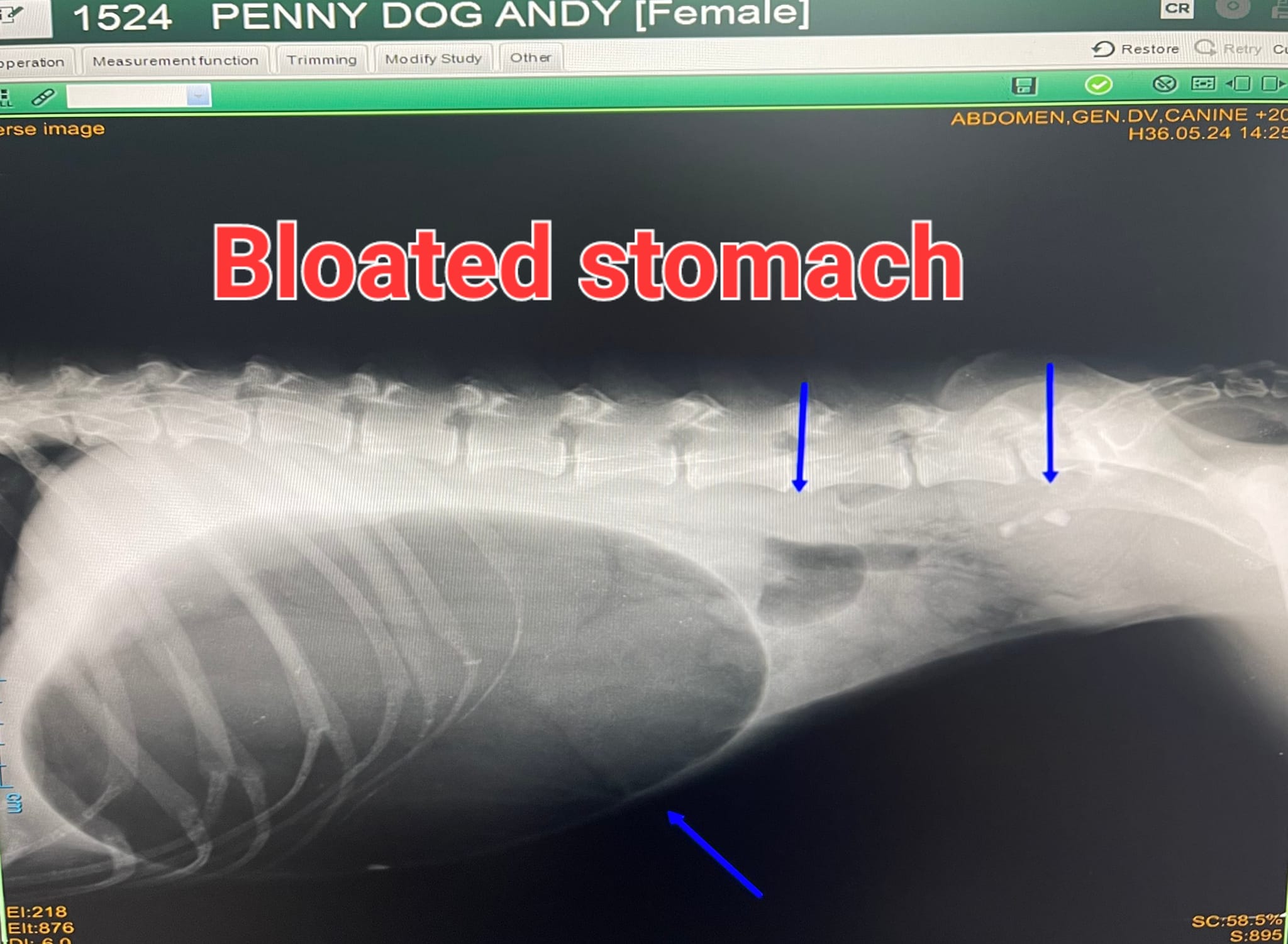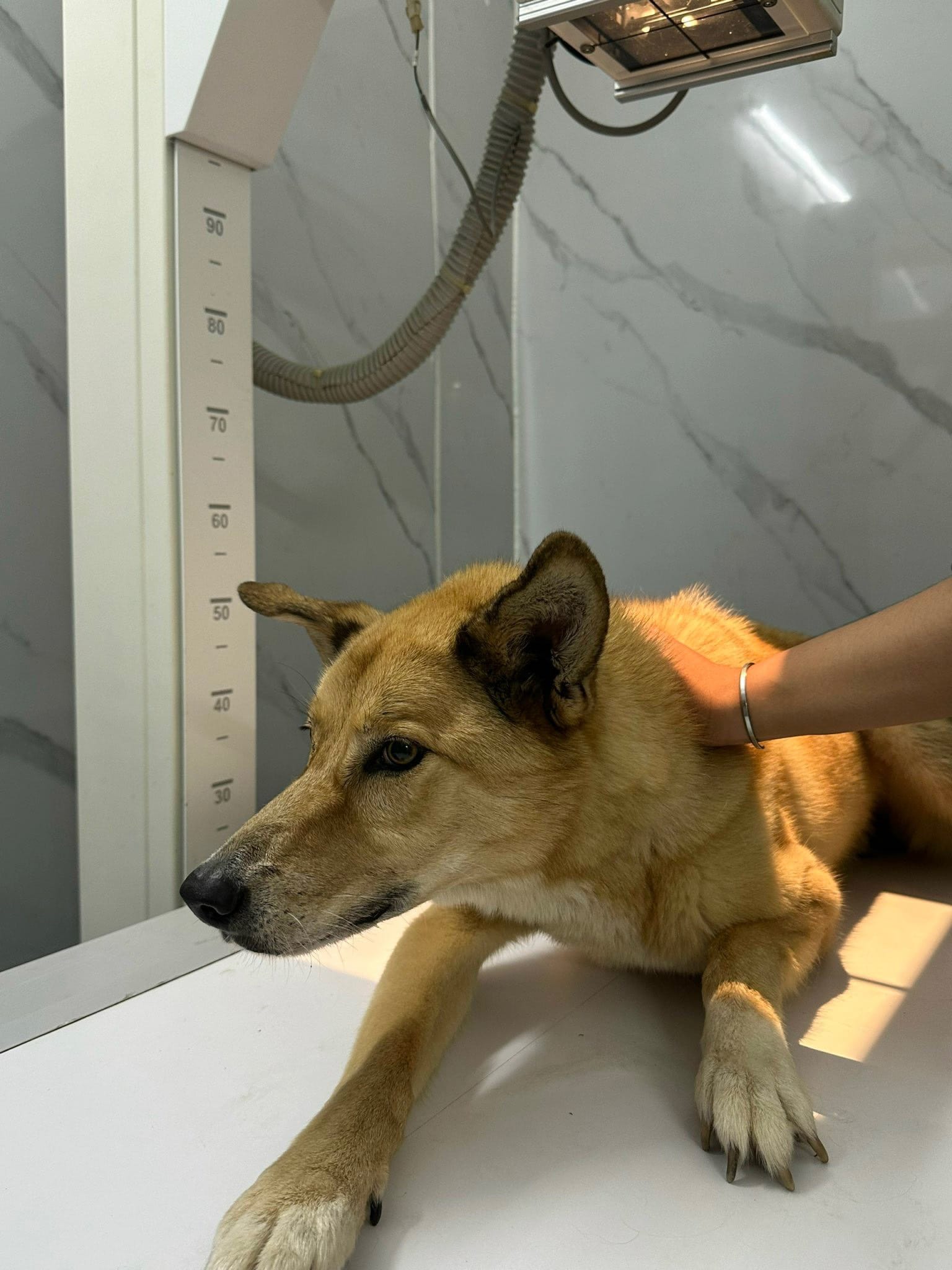PENNY is a lovely active large size dog



with deep chest. She had Gastric Dialated vulvulus -GDV (a bloated, twisted stomach).
GDV is a painful, life-threatening condition that requires emergency treatment. Bloat and retching are the most common symptoms of a GDV.
Surgery and post-operative care are costly, and euthanasia is the only alternative that will prevent suffering for the dog but Dr
Nguyen Van Nghia PhD and our vet team tried to do operation to save Penny. Thank you so much to Andy and Amy for giving us permission.
You may know Complications can include stomach necrosis, cardiac arrhythmias, bleeding and sepsis; however, with prompt emergency care and surgery, Penny survived this disease.
Penny can run and eat well now.
Bellow are what We can learn:
– GDV: A true emergency that requires emergency operation. It is called MOTHER OF EMERGENCIES
– GDV: often occurs in the evening
As a skilled veterinary surgeon, it is important to have a thorough understanding of the clinical signs and diagnostic methods to confidently diagnose dogs presenting with signs of GDV. Some of the most common clinical signs of GDV include:
• Distended and firm abdomen
• Non-productive regurgitating/retching
• Prolonged CRT (capillary refill time ).
• Diagnostic Imaging
Radiography, specifically a right lateral radiograph of the abdomen, is required to determine a diagnosis. Thoracic radiographs are also helpful to determine the presence of aspiration pneumonia.
Typically, the pylorus is displaced dorsally and partly cranially, as most cases are attributed to 180 degree torsion. This is often accompanied by compartmentalisation of the stomach.
Orthogonal views should also be considered if there is any consideration of non-surgical treatment. If the pylorus is on the left of midline and dorsally displaced, this is pathognomonic for GDV. However, cases of 360 degree rotations may be challenging to diagnose even with radiography.
Oxygen, IV fluid, Analgesia/Sedation, Decompression, Antibiotics, Gastric protectants, Derotation and Gastropexy
GDV Surgery Method (Derotation and Gastropexy)
– Empty stomach contents via oral tube and assess pyloric region for evidence of obstruction.
-Perform Incisional Gastropexy: incision in the seromuscular layer of the antrum midway between the greater and lesser curvatures of the stomach. The incision is then held up to the right lateral abdominal wall, just caudal to and parallel to the last rib. Align with internal abdominal wall and make an incision through the peritoneum and transverse abdominus/internal fascia of the abdominal musculature.
– Pexy the stomach to the abdominal wall in a single continuous pattern using 0-PDS.
– Place Jackson-Pratt drain if concerned regarding gastric necrosis
– Close the abdomen as required in 3-layer technique
We thank you so much to the whole vet team at Saigon Pet Hospital.for spending the whole evening to save Penny.





